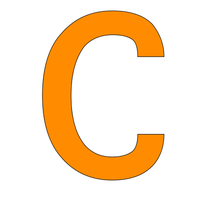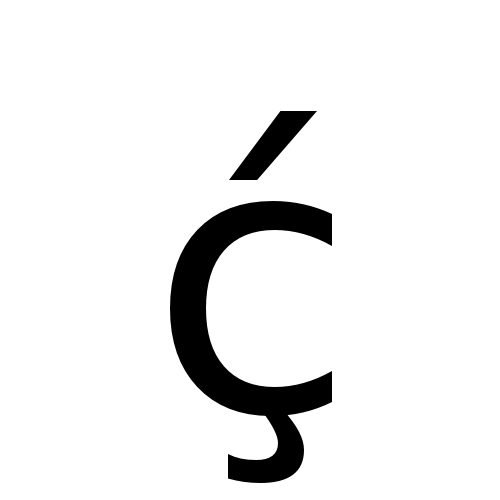Table Of Content

C functions are akin to the subroutines of Fortran or the procedures of Pascal. When return is followed by an expression, the value is returned to the caller as the value of the function. Encountering the end of the function is equivalent to a return with no expression. In that case, if the function is declared as returning a value and the caller tries to use the returned value, the result is undefined.
Implementations
Whether it references a local variable on the stack, or a register mapped into RAM, in the end, it’s all just data behind an address. And by that logic, if we can do something like some_function(®ular_variable) in C, i.e. pass a pointer as parameter to a function, we should be able to do the same with registers. On a system with a memory management unit, such as your average desktop computer, you will most certainly end up with a segmentation fault in the last line. The compiler complained because we wrote an integer into a variable that should be a pointer to an integer, and we should have listened. The C standard defines return values 0 and EXIT_SUCCESS as indicating success and EXIT_FAILURE as indicating failure. Other return values have implementation-defined meanings; for example, under Linux a program killed by a signal yields a return code of the numerical value of the signal plus 128.
C (programming language)
By design, C's features cleanly reflect the capabilities of the targeted CPUs. Both Unix and C were created at AT&T's Bell Laboratories in the late 1960s and early 1970s. Many universities and organizations began creating their own variants of the language for their own projects.
Rationale for use in systems programming
Several separate standard headers (for example, stdio.h) specify the interfaces for these and other standard library facilities. Functions may be written by the programmer or provided by existing libraries. Interfaces for the latter are usually declared by including header files—with the #include preprocessing directive—and the library objects are linked into the final executable image. Certain library functions, such as printf, are defined by the C standard; these are referred to as the standard library functions.
Syntax

C identifiers are case sensitive (e.g., foo, FOO, and Foo are the names of different objects). Some linkers may map external identifiers to a single case, although this is uncommon in most modern linkers. The main function will usually call other functions to help it perform its job.
List of C-family programming languages
It is meant for easy comprehension by programmers, but not as a definition for compiler writers—that role properly belongs to the standard itself. In addition, the C99 standard requires support for identifiers using Unicode in the form of escaped characters (e.g. \u0040 or \U0001f431) and suggests support for raw Unicode names. In 1978, Brian Kernighan and Dennis Ritchie published the first edition of The C Programming Language.[17] Known as K&R from the initials of its authors, the book served for many years as an informal specification of the language. As this was released in 1978, it is now also referred to as C78.[18] The second edition of the book[19] covers the later ANSI C standard, described below. While C does not include certain features found in other languages (such as object orientation and garbage collection), these can be implemented or emulated, often through the use of external libraries (e.g., the GLib Object System or the Boehm garbage collector). C-family languages span multiple programming paradigms, conceptual models, and run-time environments.
Strings
The internet and libraries are full of tutorials and books telling about pointers, and you can randomly pick pretty much any one of them and you’ll be good to go. However, while the basic principles of pointers are rather simple in theory, it can be challenging to fully wrap your head around their purpose and exploit their true potential. An aspect of the C standard (not unique to C) is that the behavior of certain code is said to be "undefined". In practice, this means that the program produced from this code can do anything, from working as the programmer intended, to crashing every time it is run. In the while and do statements, the sub-statement is executed repeatedly so long as the value of the expression remains non-zero (equivalent to true).
Data types
An else always matches the nearest previous unmatched if; braces may be used to override this when necessary, or for clarity. The opening curly brace indicates the beginning of the definition of the main function.
Application programming interface (API)
After preprocessing, at the highest level a C program consists of a sequence of declarations at file scope. These may be partitioned into several separate source files, which may be compiled separately; the resulting object modules are then linked along with implementation-provided run-time support modules to produce an executable image. Individual character constants are single-quoted, e.g. 'A', and have type int (in C++, char). The difference is that "A" represents a null-terminated array of two characters, 'A' and '\0', whereas 'A' directly represents the character value (65 if ASCII is used). The same backslash-escapes are supported as for strings, except that (of course) " can validly be used as a character without being escaped, whereas ' must now be escaped.
The expression array2d[4] is an array, which we are then subscripting with [3] to access the fourth integer. C has also been widely used to implement end-user applications.[53] However, such applications can also be written in newer, higher-level languages. The "hello, world" example, which appeared in the first edition of K&R, has become the model for an introductory program in most programming textbooks. The program prints "hello, world" to the standard output, which is usually a terminal or screen display. We all love LEDs, and toggling LEDs is always a good example, but let’s assume that we cannot commit to one specific I/O pin that should control our LED, and we rather keep our options open to easily change that later on, maybe even during runtime.
Except the extreme case with gets(), all the security vulnerabilities can be avoided by introducing auxiliary code to perform memory management, bounds checking, input checking, etc. This is often done in the form of wrappers that make standard library functions safer and easier to use. Pike where the authors commonly use wrappers that print error messages and quit the program if an error occurs.
Loren C. Jensen Obituaries Lewiston Tribune lmtribune.com - Lewiston Morning Tribune
Loren C. Jensen Obituaries Lewiston Tribune lmtribune.com.
Posted: Sun, 28 Apr 2024 07:00:00 GMT [source]
The C standard library provides macros, type definitions and functions for tasks such as string handling, mathematical computations, input/output processing, memory management, and several other operating system services. As a special exception to the usual C syntax rules, it is implementation-defined whether a bit field declared as type int, without specifying signed or unsigned, is signed or unsigned. Thus, it is recommended to explicitly specify signed or unsigned on all structure members for portability. A structure can also be assigned as a unit to another structure of the same type.
The return value of the printf function is of type int, but it is silently discarded since it is not used. (A more careful program might test the return value to determine whether or not the printf function succeeded.) The semicolon ; terminates the statement. The most common statement is an expression statement, consisting of an expression to be evaluated, followed by a semicolon; as a side effect of the evaluation, functions may be called and variables may be assigned new values. To modify the normal sequential execution of statements, C provides several control-flow statements identified by reserved keywords.
Implementations may reserve other keywords, such as asm, although implementations typically provide non-standard keywords that begin with one or two underscores. A function may return a value to caller (usually another C function, or the hosting environment for the function main). The printf function mentioned above returns how many characters were printed, but this value is often ignored. Manipulation of these parameters can be done by using the routines in the standard library header . The members of bit fields do not have addresses, and as such cannot be used with the address-of (&) unary operator.
Also, contemporary major compilers GCC and LLVM both feature an intermediate representation that is not C, and those compilers support front ends for many languages including C. C is often used in low-level systems programming where escapes from the type system may be necessary. Since C99, the programmer can specify that a function takes an array of a certain size by using the keyword static.
Some of those words were added as keywords with their conventional spelling in C23 and the corresponding macros were removed. Many of these had already been implemented as extensions in several C compilers. There are several standard library functions for operating with string data (not necessarily constant) organized as array of char using this null-terminated format; see below. If signed or unsigned is not specified explicitly, in most circumstances, signed is assumed. However, for historic reasons, plain char is a type distinct from both signed char and unsigned char. It may be a signed type or an unsigned type, depending on the compiler and the character set (C guarantees that members of the C basic character set have positive values).

No comments:
Post a Comment